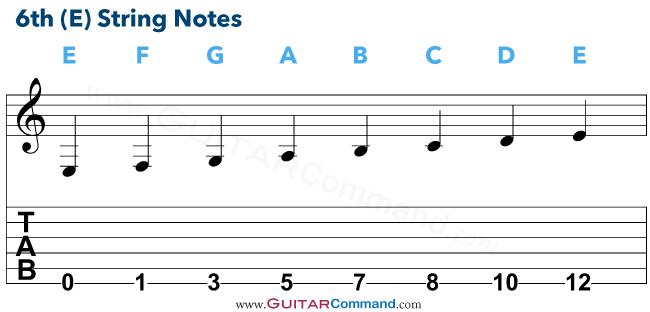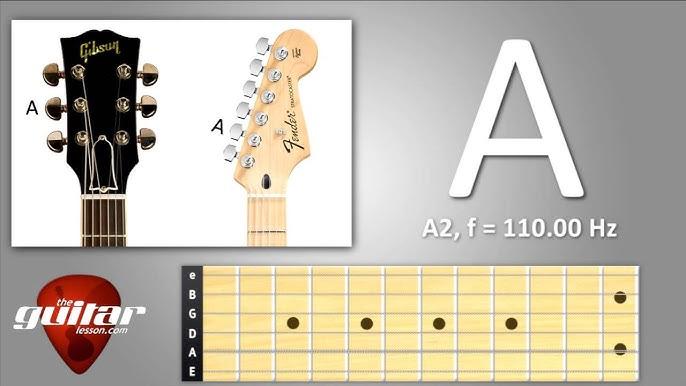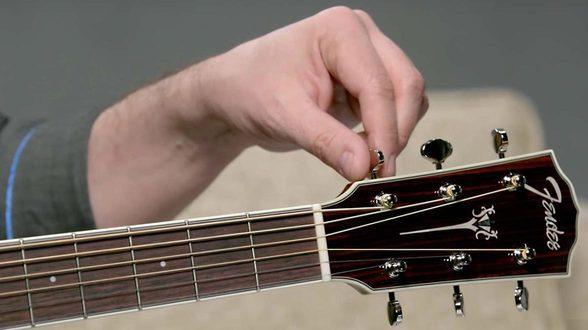Imagine standing on a dimly lit stage, fingers hovering nervously over your guitar’s strings. The audience is silent, the moment electric. You start playing, and it’s the deep, resonant notes from the low E string that anchor your sound, giving your performance a powerful foundation. But what if I told you this fundamental string holds secrets to enhancing your guitar experience, ones often overlooked? As an editor and writer deeply embedded in the guitar community, I’ve witnessed firsthand how understanding the low E string transforms not only the way beginners approach guitar but also enriches their overall musical sensation.
The low E string isn’t just about deep tones; it’s pivotal for overall guitar setup and offers unique possibilities that too many bypass in their journey. Whether tackling common tuning issues or mastering essential playing techniques, unraveling these mysteries ensures you decrypt its full potential. This exploration begins with the *low E string tuning* and extends into tailored *beginner guitar advice* that can revolutionize your musical path. Dive in, and let’s uncover the melodies waiting to emerge from this often underestimated string.
The Role of the Low E String

From my work in both performance and teaching, I’ve noticed that the low E string is crucial not just for tuning, but for establishing the foundational sound of a piece. It’s almost the guitar’s heartbeat. Did you know that the low E string’s resonance can influence the overall tonal quality of your guitar? Its deep, rich tones create a resonant bedrock upon which melodies and harmonies can freely dance.
The role of the low E string extends beyond its fundamental tuning. When I first delve into a piece, the E string sound is what I connect with to anchor my performance. In my experience, it serves as a guide, a familiar point of sonic reference that shapes the entire *tonal journey*. Every time I pick up a guitar, the first thing I ensure is that the low E string is perfectly tuned. Any guitar string problems, particularly with the low E, can have a ripple effect, impacting not just individual notes but the overall cohesiveness of the music.
Understanding this string’s importance is essential for guitarists of any level. By focusing on the nuances and tonal richness of the low E, we can enhance our playing and elevate our musical expression. This string, with its deceptively simple appearance, is the silent force driving the *soul* of the guitar. As we move forward, let’s explore the intricacies of tuning, sound, and techniques that bring out the best in this irreplaceable string.
Common Tuning Issues
Recognizing Tuning Problems

Transitioning from understanding common tuning issues into the specifics of recognizing these problems is crucial. With my extensive experience, I’ve witnessed how an unnoticed tuning issue can devastate a practice session or performance. Recognizing problems with the Low E string requires an acute awareness of guitar troubleshooting.
One must pay attention to peculiarities like string buzzing solutions and fluctuating pitch. A misaligned bridge or worn nut slot often causes the former, while environmental factors can cause the latter. The Low E string, due to its size and tension, is especially prone to these anomalies. Being able to pinpoint the where in tuning complications is a skill honed with time and keen observation, distinguishing experienced musicians from novices.
As I share these insights, my goal is to imbue your practice with skills to identify and remedy tuning irregularities, preparing you for the subsequent section on effective tuning techniques for the Low E string. As you refine your recognition abilities, you’ll ultimately enjoy a richer and more rewarding playing experience.
Tuning Techniques for the Low E String

In my practice, I’ve discovered several effective tuning techniques for maintaining the integrity of the low E string, a critical aspect often overlooked in guitar maintenance. Understanding the nuances of low E string tuning can significantly enhance the harmony of your overall sound. One essential technique I rely on involves using a digital tuner while gently pressing the string at the twelfth fret. This reveals any discrepancies in intonation more clearly, allowing for precise adjustments. Furthermore, I often find that tuning the guitar from a slightly lower pitch and then slowly bringing it up to standard E allows for better string stability and tension consistency.
These tuning methods not only address common tuning issues but also convey fundamental principles of guitar maintenance, such as keeping strings clean and regularly checking for wear. As you integrate these strategies, they’ll naturally enhance your understanding of both the guitar’s mechanics and its sonic capabilities. This understanding seamlessly enriches the subsequent exploration of sound characteristics and playing techniques in this article, building a cohesive learning experience.
Sound Characteristics of the Low E String

Is it possible that the richness of your sound is locked within the low E string? Let’s find out. The low E string is not just another component of your guitar, it is the very foundation upon which your entire sound is built. Having explored sound qualities extensively, I can attest that the low E string imparts a unique depth. A well-tuned low E can enhance not just the melody but the emotional impact of your performance. This string alone is capable of altering the dynamics of your music, providing both *weight* and *texture* that are crucial for resonant sound.
The *E string sound* is fundamental in setting the tonal balance of your playing. Its vibrations deliver profound *bass tones* that anchor the harmony, bringing a fuller dimension to your strumming and fingerpicking. Beyond its audible impact, the low E string’s role on the fingerboard allows for versatile playing techniques—allowing you to explore new dimensions of your skillset. Always remember, **your relationship with the low E string can be transformational**; embracing its sound characteristic will open up a new world of *guitar performance tips* to fine-tune your unique style.
Techniques for Beginners
Playing Without the Low E String

When I first started exploring guitar techniques, I discovered that playing without the low E string opened up new avenues for my creativity. Many musicians tend to overlook this approach, but there’s a unique magic when you forgo that deep, resonant note. By choosing to play guitar chords without the low E, you’re pushed to experiment with alternative voicings and chord progressions that often lead to intriguing musical landscapes.
For beginners, excluding the low E string can simplify the learning experience. It allows you to focus on guitar setup that emphasizes clarity and precision in your chord changes. This approach not only fosters a deeper understanding of chord structures but also encourages innovation. Whether you’re exploring open chords or diving into fingerstyle, adjusting to this method strengthens fundamental skills without overwhelming you.
As you navigate through these exercises, you’ll find that playing without the low E string enriches your overall understanding of the guitar, ultimately enhancing your musical expression as you progress. This section naturally transitions into exercises designed to further strengthen your skills, ensuring you have the practical guidance needed to advance confidently.
Exercises to Strengthen Your Skills

In developing my guitar skills, I’ve discovered that targeted exercises can be game-changers for beginners. They not only build technique but also enhance musicality, which is essential when mastering the complexities of the Low E string. Within the parent category of ‘Techniques for Beginners’, these exercises serve as practical steps to bridge the gap between understanding the string’s sound characteristics and translating that knowledge into performance.
One exercise that proves invaluable is alternating picking on the Low E string. This reinforces right-hand control while simultaneously helping to maintain a steady tempo, a critical aspect of guitar performance tips. Additionally, practicing basic scales focused solely on the Low E string allows for a deeper understanding of its tonal range and resonance, thus incorporating both left and right-hand techniques effectively. With consistent practice, these targeted approaches form a solid foundation, preparing beginners for more advanced challenges without undue repetition or difficulty.
Ultimately, by embedding these exercises into a routine, you’re fostering a more intuitive grasp of the instrument—a crucial element of beginner guitar advice. Transitioning into choosing the right string setup is the next logical step, ensuring that you not only understand tuning but are also equipped with the best tools for your specific playing style.
Choosing the Right String Setup

How can the right string setup influence your guitar’s voice? The answer might surprise you. Over the years, I’ve come to realize that the low E string isn’t just one aspect of your guitar—it’s a pivotal player in your sound symphony. Based on my interactions with luthiers and string manufacturers, I understand that the right setup can transform your playing experience. It’s about tuning yourself into a sound that is uniquely yours.
Embracing expert guitar luthier services can help you unlock nuances you might not have thought possible. The strings you choose and how they’re set up speak volumes about your musical identity, often affecting intonation, sustain, and the overall resonance of your instrument. In each session I’ve had with these artisans, I’ve learned that even small adjustments can make a significant difference. It’s not just about replacing old strings but finding those that complement the guitar’s natural tone and your playing style.
So, as you delve into mastering the low E string, remember that your guitar setup is more than mechanical adjustment—it’s the foundation of your distinctive sound tapestry. Such insights enrich your journey, ensuring each note you play is a true reflection of your musical self. This serves as a crucial element in understanding and enhancing your guitar’s unique voice.
Conclusion
Could your guitar performance dramatically improve with a few simple maintenance tips for the low E string? Reflecting on my journey, I see the low E string not just as a note but a foundation for musical expression. Proper care can make all the difference. From recognizing common tuning issues to implementing effective tuning techniques, your ability to maintain this essential string can transform your sound.
As I have discovered through experience, the low E string holds power in its resonant depth, influencing the overall sound characteristics of your playing. Understanding its unique role and choosing the correct string setup are pivotal decisions that shape your musical identity. Whether you’re a beginner learning the ropes or exploring advanced techniques, it’s clear that sustaining great tone involves more than just playing well— it demands the right guitar maintenance.
Ultimately, embracing and mastering the low E string isn’t just advantageous; it is essential for any guitarist aiming to resonate with rhythm and richness. By applying these insights, you will find your musical expression not only broadening but also becoming a true reflection of your intent and passion.
FAQs

